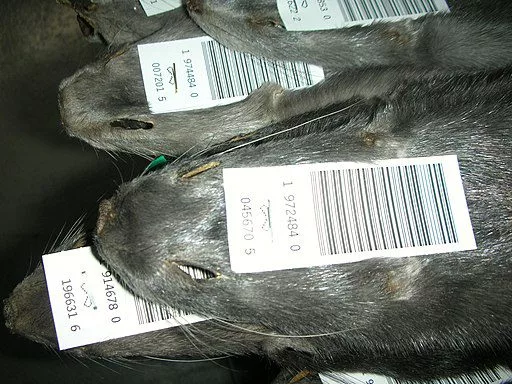
Denmark: Contamination from the mink graves must be removed due to coronavirus
Contamination from the mink graves must be removed.
Substances from buried mink have been found under the mink graves, according to the Danish Environmental Protection Agency’s pollution investigation. The first step is now taken to collect and clean the pollution. The soil under the mink graves is being investigated in connection with the pollution investigation.
Water from the ground under the mink graves at Nørre Felding and Karup must be pumped up and cleaned. It must prevent substances such as ammonium and phenols – which are substances typically found in carcasses – from polluting the environment. When the minks are dug up to be burned at the end of May, contaminated soil under the mink graves must be removed at the same time.
This is the recommendation in a draft report on the pollution survey that COWI, Geo and Rambøll have made for the Danish Environmental Protection Agency.
“Although we do not yet have the final report, a picture is now emerging of the pollution and how the groundwater is moving around the mink graves. It is important to emphasize that the advisors clearly point out that there is no risk to drinking water. And they point to well-proven treatment methods that can remove the pollution before it reaches lakes and streams, ”says Acting Office Manager Charlotte Moosdorf from the Danish Environmental Protection Agency.
Summary of pollution report for Nørre Felding
Summary of pollution report for Karup
In November, the Danish Environmental Protection Agency asked advisers from Cowi and Rambøll to carry out the pollution investigation after about four million mink had been dug into the military training grounds at Karup and Nørre Felding.
Good time to remove contamination
The pollution study shows that the degradation of the mink can be traced under the mink graves. But advisers also say it will take several years for the pollution to reach the nearest watercourse. So if remedial measures are put in place within one to one and a half years, the pollution will be curbed in good time. There is no risk of contamination of drinking water. At Karup, the drinking water is protected by thick layers of clay, and in both places the pollution moves away from the areas where drinking water is extracted.
The Danish Environmental Protection Agency will now, as the responsible supervisory authority, check the results from the advisers and then send recommendations to the Danish Veterinary and Food Administration, which is the developer and responsible for the mink graves, to take measures to contain and remove the pollution at the mink graves.
The Danish Environmental Protection Agency initiated the pollution investigation in December and has also made a so-called basic analysis of the environmental situation. Read the news: Environmental studies at the mink graves are in full swing
Recommends portable treatment plant
At the mink grave at Karup, pollution from mink has been found at three out of 32 boreholes at a depth of six meters at the graves. At the mink pit at Nørre Felding, pollution from mink has been found in one of a total of 26 boreholes at a depth of seven meters. The consultants recommend that groundwater be pumped up and treated in a transportable treatment plant that can stand in a container. It is a method that has been used, among other things, to purify groundwater under landfills. It is estimated that the cleaning must continue for a minimum of five years.
The Danish Veterinary and Food Administration has sent excavation and transport for tender. Read the Danish Veterinary and Food Administration’s news about the tender
The advisers also recommend that contaminated soil be removed in connection with the excavation of the mink. The excavation will begin at the end of May, when the risk of infection from the minks is over.
The Environmental Management Service will continue to monitor the environment at the mink graves in the coming months.
Denmark’s Environmental Management Service Press Release
Image courtesy of Wikimedia Commons





